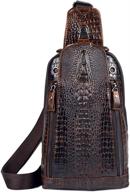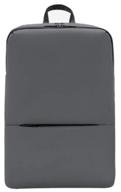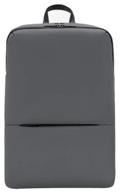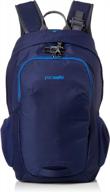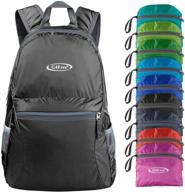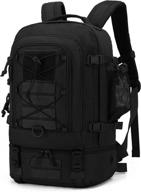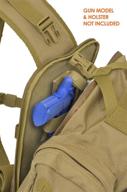Another interesting products
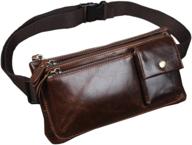

23 Review

Choosing the Right Hiking Daypack
Selecting the perfect hiking daypack is an important decision for any outdoor enthusiast. With so many options on the market, it can be tricky to determine which pack will best suit your needs. This guide will walk through the key factors to consider when picking out a hiking daypack.
Top products in 🎒 Hiking Daypacks
Capacity and Size
One of the first things to think about is the capacity and size you need for your intended hiking use. Daypacks generally range from 20-40 liters in volume. Here are some capacity guidelines:
- 20-30L - Light hikes or minimal gear needs
- 30-40L - All day hikes with extra items
- 40L+ - Multi-day hiking trips
The right size daypack should fit snugly and not bounce excessively as you hike. Be sure to measure your torso length to find the ideal frame size.
Weight and Durability
Look at the weight of empty packs you're considering. A lighter daypack will help prevent neck, shoulder and back fatigue over long distances. Also inspect the durability of fabrics and zippers used.
| Material | Description |
|---|---|
| Nylon | Affordable, lightweight, abrasion-resistant |
| Polyester | Very durable and water-resistant |
| canvas | Tough and rigid but heavier |
Features and Organization
Think about specific features that will enhance your hikes:
- Pockets: Interior and exterior stash pockets to organize gear
- Hydration reservoir: Allows hands-free hydration on the trail
- Compression straps: Cinch down excess bulk from unpacked areas
- Attachment points: For hiking poles, ice axes, helmets, etc.
Choosing a pack with smart organizational options will help you easily access gear while hiking.
Comfort and Fit
For all day comfort, seek out daypacks with ventilated, breathable back panels as well as padded shoulder straps. Many packs include a removable hip belt to transfer weight to the hips if carrying heavier loads. Try packs on with weight inside to test the comfort factor.
Adjust the torso length, load lifters and sternum straps to dial in the ideal fit for your body type. Seek expert advice from retailers if you need help fitting your daypack.
Additional Considerations
Here are a few final tips for choosing a hiking daypack:
- Compare pricing between brands and models
- Read online customer reviews
- Select a bright color for visibility
- Bring it on day hikes for testing
Taking the time to properly research and select your hiking daypack will ensure you have a comfortable, high-performing companion on all your outdoor adventures.
Key Features to Look for in a Hiking Daypack
When shopping for a hiking daypack, there are several key features to consider that will affect comfort, performance and convenience on the trail. Taking the time to evaluate these factors will help you select the optimal pack for your needs.
Torso and Hip Belt Fit
A proper fit is crucial for carrying comfort. Look for packs with adjustable torso lengths and hip belts to customize the fit:
- Torso sizing helps position shoulder straps and support properly on your back.
- Hip belts transfer weight to the hips and pelvis rather than shoulders.
For example, the Osprey Talon 22 has an adjustable harness and hip belt providing a dialed-in fit for various body sizes.
Shoulder Strap and Back Panel Padding
Padding on shoulder straps and back panels prevent painful pressure points under weight:
- Thick, ventilated shoulder straps cushion heavy loads.
- Ridged, breathable back panels allow airflow to keep you cooler.
The Gregory Zulu 30 uses molded, ventilated shoulder straps and back panel to increase comfort on long hikes.
Integrated Rain Cover
Look for a built-in rain cover to protect gear during storms:
- Covers safeguard pack contents without needing to carry a separate cover.
- Water-resistant fabrics on the pack body add further weather protection.
The Deuter Trail 26 pack includes a slide-out rain cover and water-resistant nylon canvas fabric.
Hydration Reservoir Compatibility
Reservoir sleeves and ports allow for hands-free hydration:
- Dedicated sleeves hold reservoirs securely in place.
- Ports and hooks enable easy hose positioning over shoulders.
The Osprey Raptor 14 has a 3L reservoir sleeve and external hose routing for on-the-move hydration.
Similar products
Attachment Points and Compression Straps
External attachment points and straps secure bulky items and cinch down loose loads:
- Daisy chains, cord loops and gear loops provide attachment points.
- Compression straps minimize interior shifting and loose weight.
The Thule Versant 32 has haul loops, trekking pole attachments and upper side compression straps for external carrying options.
Interior Organization
Smartly designed interior pockets keep your gear tidy and accessible:
- Mesh pockets, sleeves and dividers efficiently organize essentials.
- Key clips, zippered pockets and stash zones hold small items.
The Deuter Speed Lite 20 features a map pocket, sunglass sleeve and stretch overflow side pockets for organized storage.
Focusing on these key performance and comfort features will help you select an exceptional hiking daypack for your adventures on the trail.
Capacity and Size Considerations for Hiking Daypacks
Choosing the right capacity and size daypack for your hiking needs is crucial for carrying comfort and efficiency on the trail. Consider these guidelines when deciding on daypack volume and dimensions:
Intended Trip Duration and Gear Needs
The longer your hike and the more gear you need to carry, the higher capacity pack you'll require:
- Short hikes (2-5 hours): 20-25 liters
- Day hikes (5-12 hours): 25-35 liters
- Overnight hikes (1-3 days): 35+ liters
Pack only essentials to avoid overloading daypack capacity and creating discomfort.
Torso and Frame Size
The daypack should fit your torso length to maximize comfort:
- Measure from C7 vertebra to iliac crest for torso length.
- Match measurement to recommended frame size for each pack.
- Load-carrying capacity often increases with frame size.
For example, the Osprey Stratos 36 comes in S/M or M/L frame sizes to get an ideal fit.
Body Type and Weight
Larger or taller hikers often need higher capacity packs:
- Bigger torsos require more material and capacity.
- Bulkier body frames can limit cinching down packs.
Additionally, the more you weigh, the greater load capacity you'll need in a pack for hiking comfort.
Accessibility Features
Pockets, straps and openings should enable accessing gear while wearing:
- Side zip access ideal for large capacity packs.
- Front shovel pocket great for layers and often-used items.
Prioritize accessibility based on how you like to organize and access your hiking gear on the move.
Dialing in the ideal capacity, dimensions and accessibility features will ensure your daypack has ample, comfortable carrying performance.
Weight and Durability Factors for Hiking Daypacks
When selecting a hiking daypack, evaluating the weight and durability is important for comfort and longevity on the trail. Consider the following factors:
Pack Fabric and Materials
The fabrics used impact the pack weight and sturdiness:
- Nylon: Durable, weather-resistant, decent lightweight option.
- Polyester: Very strong but heavier than nylon.
- Dyneema: Extremely lightweight and tear-resistant.
For example, the Cotopaxi Luzon 24L uses lightweight nylon ripstop but reinforces high-wear areas with heavier nylon for durability.
Zippers, Buckles and Fasteners
These closures should all withstand frequent use and abuse:
- Look for abrasion-resistant zippers like YKK or ITW Nexus brands.
- Duraflex is a popular manufacturer for durable plastic buckles.
- Metal fasteners are stronger than plastic alternatives.
The Granite Gear Crown2 60 backpack uses oversized zippers, beefy buckles and metal attachments for ruggedness.
Internal Frame Material
Internal frame materials affect sturdiness and pack weight:
- Aluminum alloy: Very strong but heavier.
- Carbon fiber: Excellent strength-to-weight ratio.
- Polymer: Decent durability and lighter weight.
For example, the ultralight ZPacks Arc Blast uses durable and lightweight carbon fiber frame rods.
Abrasion Reinforcements
Look for abrasion pads and reinforcements in high-wear areas:
- Reinforced bottom panels protect against trail abrasion.
- Shoulder and hip belt pads prevent strap fraying.
- Reinforcements on side and front panels.
The Mystery Ranch Scree 32 pack adds abrasion panels on the bottom and sides for durability.
Weatherproofing Features
Waterproof fabrics and coatings help shed rain, snow and debris:
- DWR (durable water repellent) coatings cause water to bead up.
- Seam taping prevents moisture from entering seams.
- Laminated fabrics and pack covers provide waterproof barriers.
The Sea to Summit Hydraulic Dry Pack has fully taped seams plus a DWR nylon shell for waterproof weather protection.
Evaluating these weight and durability factors will ensure your hiking daypack will withstand years of adventure use.Attachment Points and Pockets on Hiking Daypacks
Having well-designed attachment points and pockets on a hiking daypack is crucial for carrying and accessing gear efficiently on the trail. Here are some key features to look for:
External Attachment and Carry Options
- Daisy chains - Allow securing items with carabiners or webbing.
- Gear loops - Hold ice axes, trekking poles, helmets.
- Piggyback strap system - Carry sleeping pads, tents or extra jackets externally.
- Haul loops - Useful for lashing extra gear to the exterior.
External options like on the Osprey Stratos 34 allow you to attach bulky items securely.
Side Pockets
- Mesh stretch pockets - Expand to hold water bottles, jackets, etc.
- Zippered pockets - Securely stow smaller items like phones, wallets, keys.
- Pole holders - Allow easy access to collapsed trekking poles.
Hip belt pockets like on the Gregory Zulu also give quick access to snacks or small essentials.
Front Pockets and Access
- Shove-it pockets - Quickly stash layers or extra clothing.
- Vertical and horizontal zippers - Enable access to interior gear while wearing.
- Lid pockets and dividers - Keep frequently-used items close at hand.
The Deuter Speed Lite 20 utilizes both top lid and shove-it front pocket designs for access.
Interior Organization
- Hydration sleeve and port - Hold water bladders and tubing.
- Mesh dividers and pockets - Segment gear like clothing, food, tools.
- Key clips - Secure keys, carabiners and other accessories.
Interior sleeves and pockets on packs like the REI Co-op Trail 25 help stay organized.
Choosing a daypack with well-designed carry options, convenient access and smart organization will make hiking more efficient and enjoyable.
How to Use Amazon Prime to Buy Hiking Daypacks
Amazon Prime provides a number of benefits when purchasing hiking daypacks and outdoor gear. Taking advantage of Prime perks can save you money and get your new pack quicker.
Search for Prime Eligible Packs
When browsing daypacks on Amazon, look for the "Prime" tag to identify options available for fast, free shipping with Prime membership. Narrow your search results by checking the "Prime Eligible" filter to only see packs included.
Top outdoor brands like Osprey, Gregory, Deuter, and High Sierra offer many Prime eligible hiking daypack models.
Compare Prices
See how prices compare between different sellers for the pack you want. Often Amazon directly has very competitive pricing.
Use the price history chart on each product page to check for price drops and the best time to buy. CamelCamelCamel is another site that tracks Amazon price changes.
Check for Coupons
Check both Amazon and manufacturer websites for any available coupons to save extra money on your pack purchase. Some coupons are for % or $ off specific products.
You can also check sites like CouponCabin and RetailMeNot for active coupons codes you can try at checkout.
Look for Bundles
See if the daypack is available in a bundle with other hiking gear like bottles, trekking poles or camping accessories. Purchasing bundles can add big savings compared to buying separately.
For example, many hydration compatible packs come in bundles with water reservoirs and insulated hoses included.
Consider Warehouse Deals
Amazon Warehouse has lightly used products at discounted prices. Department returns and open box items can save up to 50% or more.
Read condition details closely and inspect packs upon arrival. But Warehouse Deals can mean big savings on top rated packs.
Using Amazon Prime's fast shipping, price transparency and bundling options allows you to get the ideal hiking daypack at the best price point. Happy trails!
What Are The Most Important Features To Look For In A Hiking Daypack??
Based on the search results, here are the most important features to look for in a hiking daypack:
- Size: The backpack should be the right size to fit all your essentials.
- Comfortable straps: Look for backpacks with padded shoulder straps and hip belts to distribute the weight evenly.
- Adjustable suspension system: This feature allows you to adjust the backpack to fit your body and distribute the weight evenly.
- Quick access outer pockets: These pockets allow you to easily access items you need frequently.
- Separate compartments: A separate bottom compartment and access can help you organize your gear and keep it easily accessible.
- Hydration system: An internal pouch in the backpack in the back is perfect for holding a water bottle and some bags even have an outlet to let a drinking tube pass.
What Are The Pros And Cons Of A Hydration System In A Hiking Daypack??
Here are the pros and cons of a hydration system in a hiking daypack:
Pros:
Cons:
What Are The Best Brands For Hydration Systems For Hiking Daypacks??
Based on the search results, here are some of the best brands for hydration systems for hiking daypacks:
- Osprey: Osprey is a popular brand for hiking daypacks and hydration systems. They offer a range of hydration packs with different capacities and features, including the Skarab, Skimmer, and Manta models.
- Gregory: Gregory is another popular brand for hiking daypacks and hydration systems. They offer a range of hydration packs with different capacities and features, including the Nano, Citro, and Juno models.
- CamelBak: CamelBak is a well-known brand for hydration systems, and they offer a range of hydration packs for hiking with different capacities and features, including the Octane and HydroBak models.
- REI Co-op: REI Co-op offers a range of hydration packs for hiking, including the Flash 15 Hydration Vest, which is a popular option for on-the-go storage.
- Deuter: Deuter is a brand that offers a range of hydration packs for hiking, including the Speed Lite 24L, which is a popular option for longer day hikes and carrying more gear.
- TETON Sports: TETON Sports offers a range of hydration packs for hiking, including the Oasis and TrailRunner models, which are popular options for budget-conscious hikers.





